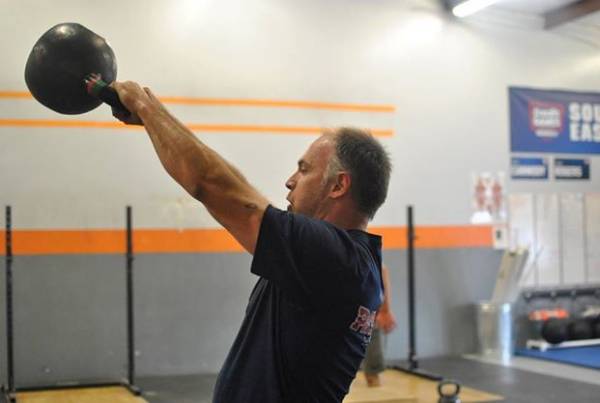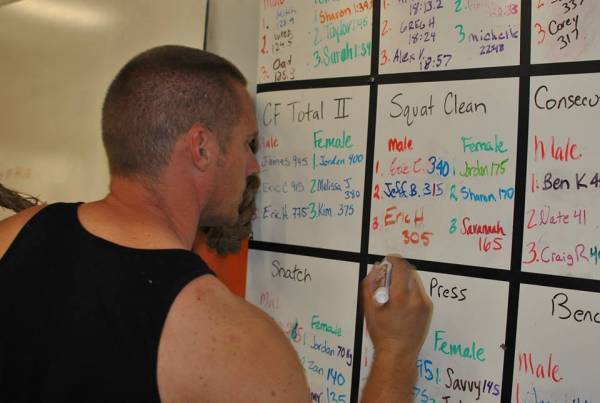Aging, if done correctly, is full of beauty, comedy, wisdom and enlightenment. It’s a great ride with plenty of ups and downs. You can save yourself years of trouble, pain, and calamity by accepting that successful people adapt to aging, that the rules of biology apply to you, and that education is your best friend.
Aging, if done correctly, is full of beauty, comedy, wisdom and enlightenment. It’s a great ride with plenty of ups and downs. You can save yourself years of trouble, pain, and calamity by accepting that successful people adapt to aging, that the rules of biology apply to you, and that education is your best friend.
By all means, do not go gently into that good night, just make sure you rage against the dying of the light with the one thing we all forget to use in the beginning: our heads. Here’s are the top five training mistakes made after turning 35 and how you can avoid them.
RELATED: Coming to Terms With Being an Aging Athlete
1. You Still Believe You Can Do It Like You’re 25
We all know that the personal record days coming off a pizza-and-beer all-nighter are over. But even when we clean up our diet and lifestyle, we still want to train like we did when we were in our twenties. With all the same volumes, rep schemes, intervals, and non-recovery days, and all the sexy programs we see in the magazines and on the Internet.
This makes no sense. And you know it because you feel like shit and can’t “keep up” with “those damn kids” anymore.
Science tells us our metabolism is slowing down, it takes longer to recover (recovery is the unsexy place where growth happens in training) and changes in sleep patterns and circadian rhythms occur, which means you will probably sleep less at night and not sleep as deeply. All bad news for training.
So what do you do during this transitional period? Easy. Grow up.
2. You Still Think More Is Better
More training is not better. Smarter training and more recovery is better. Understanding this is vital to your continuous improvement.
Your training program must be a progression toward your goal, whatever that goal may be. Yes, training can absolutely have the appearance of randomness, but it absolutely cannot be randomly programmed.
“More training is not better. Smarter training and more recovery is better.”
Periodization in an intelligent must-have. Your program must allow for the proper rebuilding of broken-down tissue between sessions. This takes longer as you age, and you’re best off seeking the help of a professional when it comes to programming. Programming is as much art as it is science.
Mechanics and body alignment (i.e. mobility), as well as technique, play a huge role in your training sessions as joints age. Joint pain is not okay and is, in fact, a biomarker for injury. Don’t be afraid to seek out new strategies and new techniques. Play. Experiment. Adapt. Overcome.
Remember, abundance and complications are the way of youth. Quality and simplification are the challenge of adulthood. Think on this. Apply it to your training.
3. You Have No Respect for the Most Insidious Device Invented
This piece of equipment drives sedentary behavior, is practically unavoidable for most of us; is a major cause of those tight sensations in our hips and hamstrings; weakens our stabilizing muscles; ruins posture; increases the risk of cardiovascular disease, high blood pressure, diabetes and obesity; and has been linked to cancer, depression and a shorter life expectancy.
RELATED: Posture Hack: How to Have Better Desk Posture (Video)
It is most likely right under your ass right now. It’s called a chair. How’s your posture right now?
Want to blow your own mind? Take a random day in your workweek and time yourself. How many hours did you spend sitting? Include your relaxation time at home. Now, before you decide to run out and be that treadmill-desk person, try a little management of the problem instead.

Start by getting up and moving around a little more throughout your day. Walk down to your coworker’s office instead of shooting an email. Cut your TV time down by a third. Have a team meeting with everyone standing or go for a walk and talk.
“Start by getting up and moving around a little more throughout your day.”
Your legs are the big movers. The contractions of these muscles increase fuel consumption and will mediate the collection of high levels of blood sugar in the bloodstream due to inactivity. This is a good thing. Move your big movers.
4. You Have Yet to Grasp Situational Awareness
Remember in college when you were so busy? What’s your reaction now when a twenty-something tells you how busy he or she is? Exactly.
There are many factors in your life that did not exist before now: children, bills, unexpected bills due to children, a job with increased responsibility and leadership roles, more stress, more relationships to manage, more creative and innovative opportunities, more responsibilities at home, more decisions to make each day and less time to make them, more stress, less sleep, and fewer hours in the day to be selfish.
This all must be accounted for in your training. Your training log should include a record of your stress level, how much sleep you got, and if you stayed on track with your diet. It doesn’t have to be a complicated log. Record them all on a scale of 0 to 3. Zero is horrible. Three is excellent.
RELATED: How to Create Perfect Training Sessions and the Perfect Program
The truth is there are no bad days training if you just accept that sometimes life is going to get in your way. Do what you can with what you have where you are.
Only have time for a quick warm up and 3 x 5 on the back squat today? Own it. Only have thirty minutes for your run? Do a light five-minute warm up and four sets of hard running for three minutes, rest for three minutes.
5. What and Who You Compare Yourself to Is All Wrong
It is dangerous when you compare your numbers and your look to the professionals who do it for a living or the person next to you in the gym who is ten to twenty years younger. These people do not have the same life as you. They don’t have the same responsibilities, complications, or genetic traits as you. You are not comparing apples to apples. You are being a juvenile idiot.

By all means, have goals, but respect that you’re not “who you were back then.” You’re not even who you were yesterday. You are you, right now, and the only person you should compare yourself to is you. Period.
RELATED: What Is Effective Training for Older Adults?
Have Fun With Your Fitness
You must acknowledge that immediate gratification plays no role in your evolution, so enjoy the pursuit of a disciplined practice in the art of fitness. Have fun! Eliminate pressure. If you do this, you will learn that fitness can offer a lot more than just aesthetics and statistics.
And it will be these lessons that ensure your life will be full of grace, beauty, comedy, wisdom, and enlightenment. Avoid all five of these mistakes and you can get to the good stuff much more quickly.
Photos courtesy of CrossFit Impulse.






